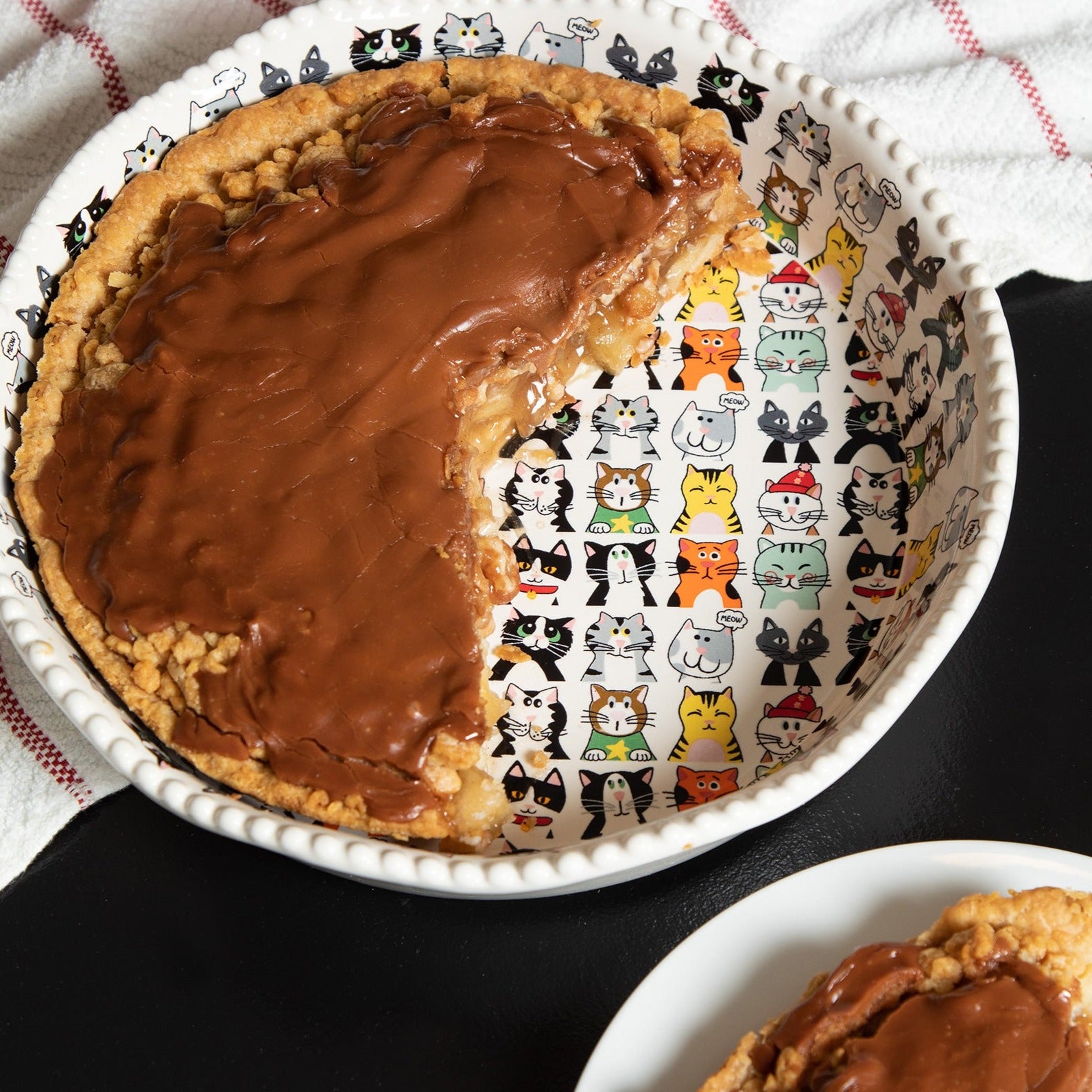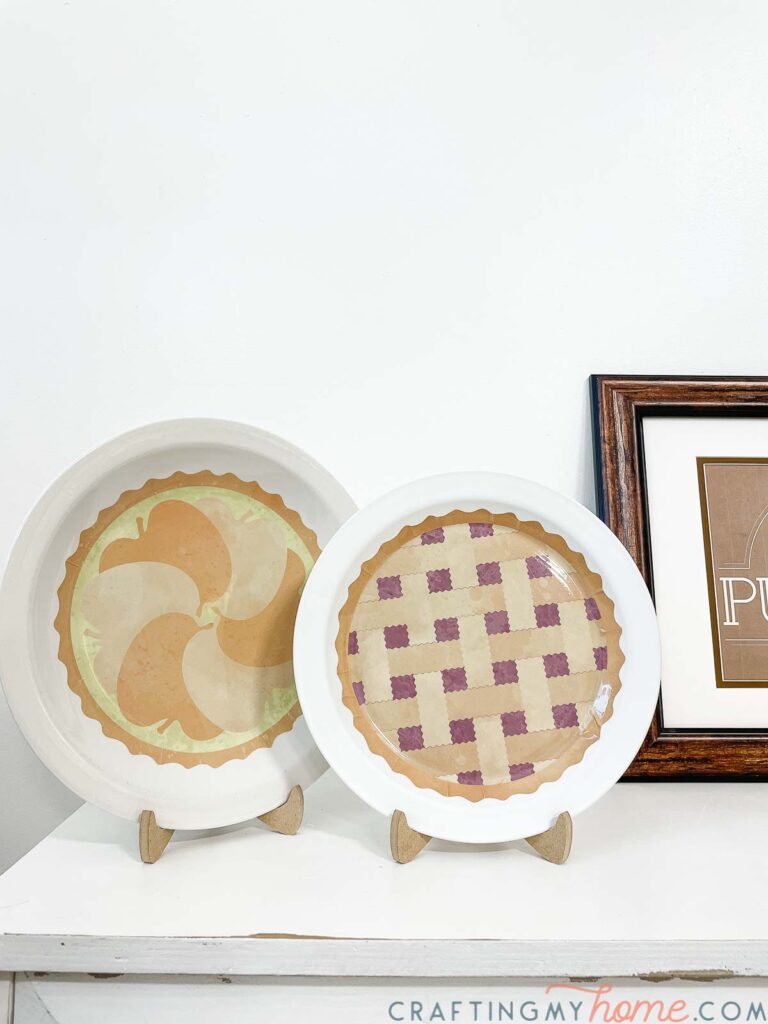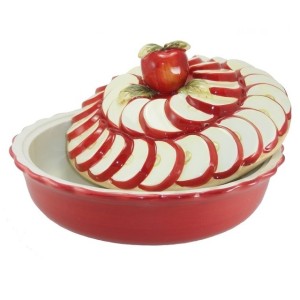When it comes to baking, the right tools can make all the difference. One of the most charming yet functional pieces to have in your kitchen is a decorative pie plate. These plates not only serve as a canvas for your culinary creations but also showcase your personal style and add a decorative touch to your dining table. With a variety of materials, designs, and sizes available, choosing the right decorative pie plate can be both an art and a science. In this article, we will explore everything you need to know about decorative pie plates, including their history, materials, care tips, and how to choose the perfect one for your needs.
What Are Decorative Pie Plates?
Decorative pie plates are specialized dishware designed specifically for baking and serving pies. They come in various materials, shapes, and designs, allowing bakers to showcase their creations beautifully. Unlike traditional pie pans, decorative pie plates often feature intricate designs, vibrant colors, and unique patterns that add flair to your kitchen and dining experience.
The History of Pie Plates
The use of pie plates dates back centuries, with their origins intertwined with the art of baking. Initially, pie plates were simple and utilitarian; however, over time, they evolved to become decorative items. Today, decorative pie plates are not only functional but also serve as heirlooms and collectibles.

Evolution of Design
In the early days, pie plates were made from clay or metal and were primarily functional. With the advent of porcelain and glass, decorative designs became more prevalent. Artisans began to craft stunning pieces that reflected cultural and seasonal themes. Modern decorative pie plates often incorporate contemporary designs, ensuring there’s something for every taste.
Materials Used in Decorative Pie Plates

Choosing the right material for your decorative pie plate is crucial, as each material has its own benefits and drawbacks. Here’s a breakdown of the most common materials you’ll find:
1. Ceramic
Ceramic pie plates are popular due to their excellent heat retention and even baking. They come in a wide variety of designs, colors, and patterns.

Pros:
- Beautiful designs
- Good for baking and serving
- Durable with proper care
Cons:
- Can chip if dropped
- May require special cleaning methods
2. Glass
Glass pie plates allow you to see the crust and filling as they bake, which is great for monitoring progress.

Pros:
- Easy to clean
- Bake and serve in the same dish
- Non-reactive material
Cons:
- Can break or shatter if mishandled
- Heat conductivity varies
3. Stoneware
Stoneware pie plates are thicker and provide excellent heat distribution, which promotes even baking.

Pros:
- Very durable
- Retains heat well
Cons:
- Can be heavy
- More expensive than other options
4. Metal
Metal pie plates (often aluminum or stainless steel) are lightweight and heat up quickly, perfect for a beautifully baked crust.

Pros:
- Affordable
- Lightweight
Cons:
- Can rust if not cared for properly
- Not as visually appealing
Choosing the Right Decorative Pie Plate

When selecting a decorative pie plate, consider the following factors:
1. Baking Needs
Think about what types of pies you will be making. For fruit pies, a deeper plate may be necessary, while custard pies can often be prepared in a shallower dish.
2. Style and Aesthetic
Your decorative pie plate should complement your kitchen décor and dining style. Look for designs that resonate with you, whether that be rustic, modern, or vintage.
3. Size
Most pie plates come in standard sizes, typically 9 inches in diameter. However, it’s essential to check the capacity and ensure it fits well with your recipes.
4. Maintenance and Care
Some materials require more careful cleaning and may not be dishwasher or microwave safe. Always check the care instructions to keep your decorative pie plate in the best condition.
Popular Decorative Pie Plate Designs
Decorative pie plates come in a variety of designs, ranging from classic to modern. Here are some popular styles to consider:
1. Floral Patterns
Floral designs are timeless and often evoke a sense of warmth and home-cooked goodness. They are perfect for traditional pies and gatherings.
2. Geometric Shapes
Modern geometric patterns can give a contemporary touch to your table and are perfect for themed events or casual dinners.
3. Seasonal Themes
Many cake and pie plates feature seasonal designs—think pumpkins for fall or snowflakes for winter. These can add a festive touch to your table setting.
Pros and Cons of Decorative Pie Plates
| Pros | Cons |
|---|---|
| Adds aesthetic value to your baking | Can be expensive depending on the material |
| Great for serving and displaying pies | Some may not withstand extreme temperatures |
| Variety of styles to match your kitchen | May require special care and washing |
Caring for Your Decorative Pie Plates
To ensure the longevity of your decorative pie plates, proper care is essential. Here are some tips:
1. Cleaning
Always follow the manufacturer’s instructions for cleaning. Most ceramic and glass plates can be washed in the dishwasher, while stoneware may require hand washing.
2. Storing
Stack plates carefully to avoid chipping. Use felt or a soft cloth in between to protect the surface.
3. Avoiding Temperature Shock
Many decorative pie plates cannot handle sudden temperature changes. Let them warm up to room temperature before putting them in a hot oven or refrigerator.
Where to Buy Decorative Pie Plates
Decorative pie plates can be found at various retail locations, including:
1. Kitchen Specialty Stores
These stores often carry a wide selection of decorative bakeware, including unique and artisan pieces.
2. Online Retailers
Websites like Amazon, Etsy, and eBay offer a vast variety of styles and materials. Be sure to check customer reviews before purchasing.
3. Local Artisan Markets
Supporting local artisans can lead you to one-of-a-kind decorative pie plates that can also serve as great conversation starters.
FAQs About Decorative Pie Plates
What is the best material for a decorative pie plate?
The best material depends on your baking style. Ceramic and glass are popular for their beauty and functionality, while stoneware provides excellent heat retention.
Can I use a decorative pie plate for baking pizza?
Yes! Many decorative pie plates can also be used for baking pizza. Just be sure to check that they can withstand high temperatures.
How do I know if my decorative pie plate is oven-safe?
Always check the manufacturer’s label or packaging. If it’s made from ceramic, glass, or metal, it should generally be oven-safe unless otherwise specified.
Can I use a decorative pie plate in the microwave?
Many glass and ceramic pie plates are microwave-safe, but you should always check the specific product details for safety.
Are decorative pie plates dishwasher-safe?
While some decorative pie plates are dishwasher-safe, others may require hand washing to maintain their beauty. Always follow the care instructions provided.
Conclusion: The Joy of Baking with Decorative Pie Plates
Incorporating decorative pie plates into your baking routine not only enhances the aesthetic of your creations but also elevates your baking experience. With a vast selection of materials, designs, and sizes to choose from, you can find the perfect pie plate that fits both your culinary and personal style. Whether you’re baking for a holiday gathering or a simple family dinner, a beautiful pie plate will surely impress your guests and make every pie a work of art.
So, the next time you’re ready to whip up a delicious pie, consider choosing a decorative pie plate that speaks to you. Happy baking!